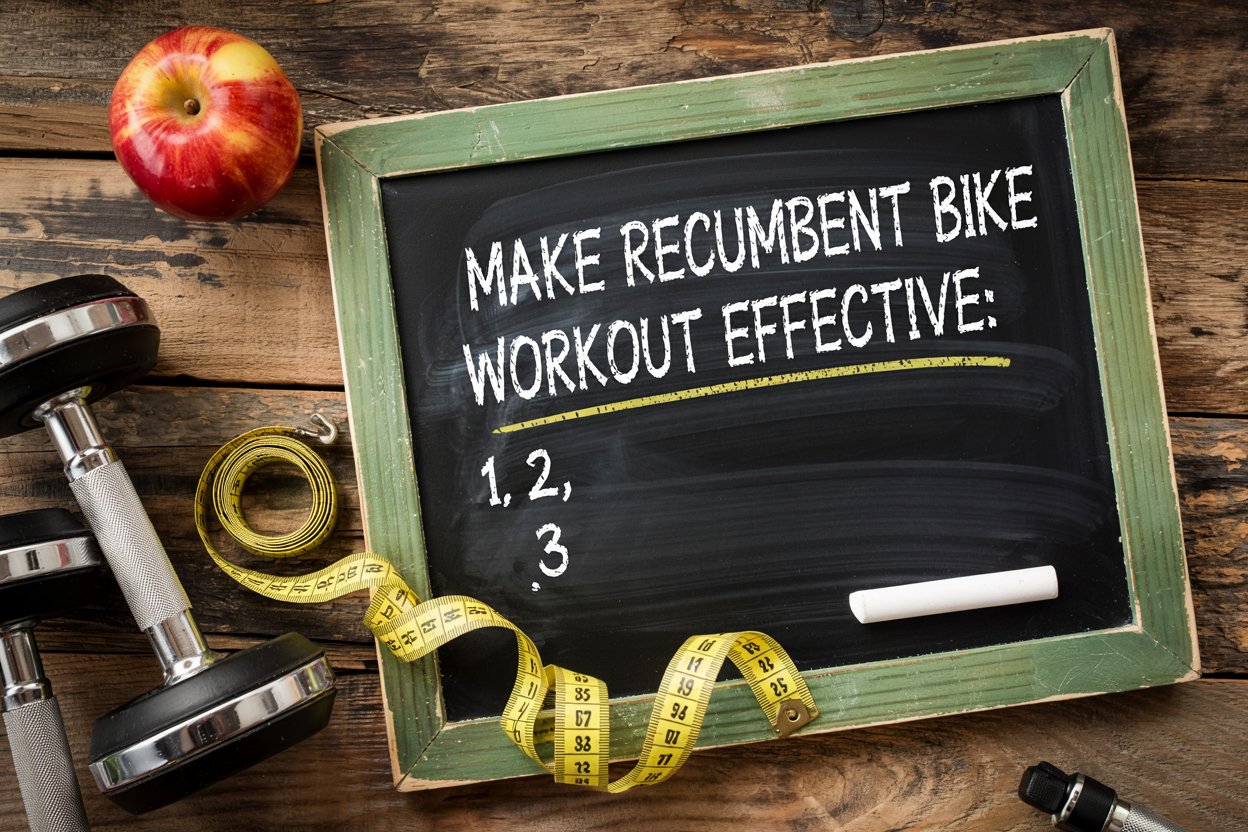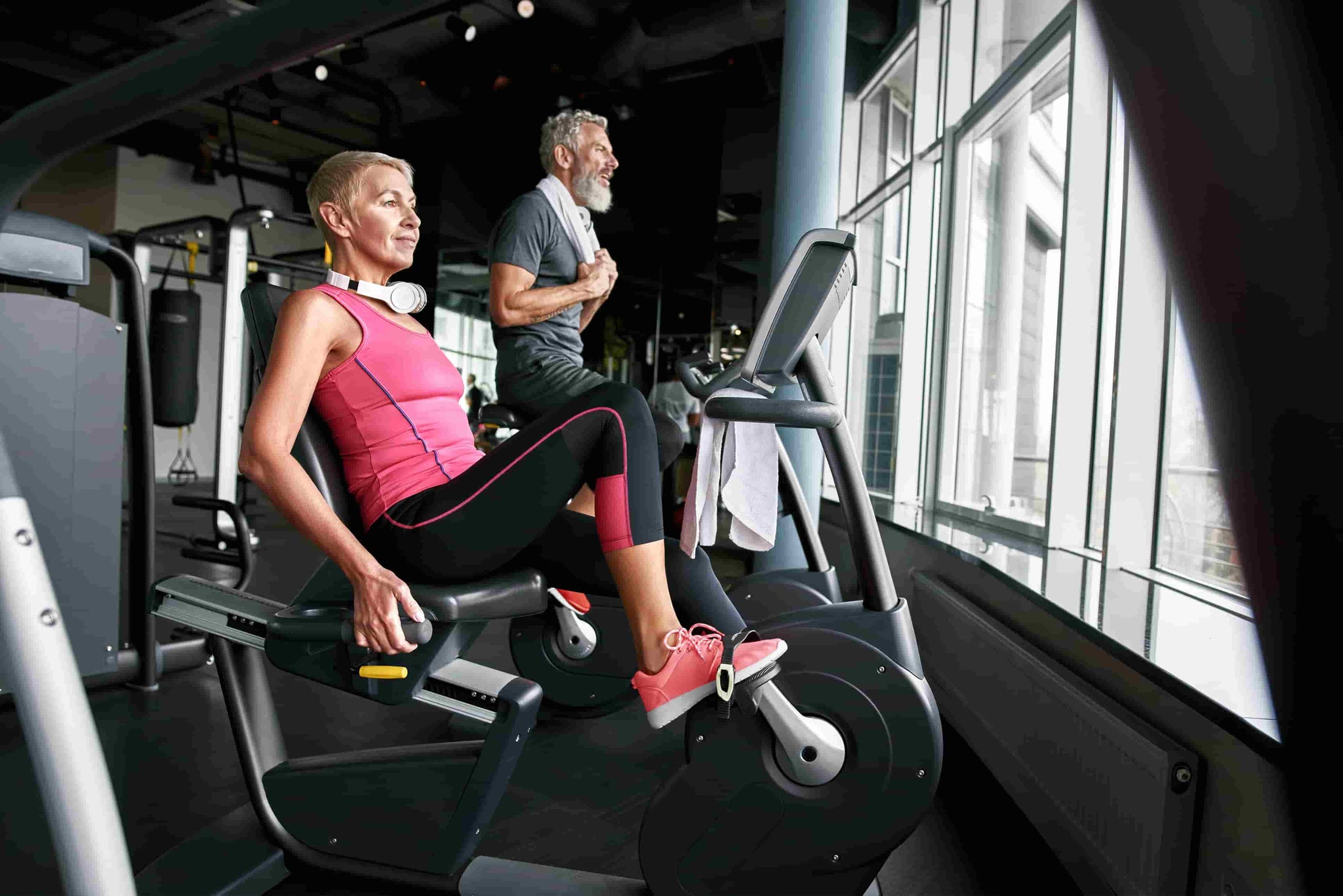How to Make a Recumbent Bike Workout Effective
Written by: Vanswe Fitness
Published on: May 01, 2025. Last updated: May 08, 2025

To make your recumbent bike workout truly effective, it’s not just about pedaling—it’s about doing it right. From setting the right goal to adjusting your seat and tracking your progress, every detail matters.
This guide breaks down Five Essential Tips to help you burn more calories, protect your joints, and build fitness safely and efficiently. Whether you're riding for weight loss, heart health, or recovery, these strategies will help you get the most out of every session.
1. Define Your Fitness Goal
![According to the ACSM’s Guidelines for Exercise Testing and Prescription (12th ed.) [1], exercise programs should be individualized based on goals such as weight management, cardiovascular fitness, or injury recovery (ACSM, 2021).](https://cdn.shopify.com/s/files/1/0004/0779/7826/files/ChatGPT_Image_Apr_30_2025_10_49_42_AM.webp?v=1745982085)
According to the ACSM’s Guidelines for Exercise Testing and Prescription (12th ed.) [1], exercise programs should be individualized based on goals such as weight management, cardiovascular fitness, or injury recovery (ACSM, 2021).
So, to create an effective recumbent bike exercise, start by defining your fitness goal. Your objective determines how long, how often, and at what intensity you should ride.
To make it easier for you to align your training with your desired outcomes, we’ve created a clear comparison table. It shows exactly which type of workout strategy is best suited for each specific fitness goal — helping you train smarter, not harder.
| Fitness Goal | Training Focus |
|---|---|
| Weight loss | Longer duration, moderate intensity, calorie burn |
| Cardiovascular health | Consistent pacing in heart rate Zone 2 |
| Injury recovery | Low resistance, shorter sessions, careful joint alignment |
| Muscle endurance | Gradually increase time and resistance |
| Full-body engagement | Add upper body movement (e.g., stroke rehabilitation) |
Related Article:
Recumbent Bike HIIT Workout: Burn Fat Faster
Is a Recumbent Bike Good for Cardio?
9 Expert Guides: How Recumbent Bikes Help With Pain, Rehab, and Recovery
What Muscles Does a Recumbent Bike Work?
Recumbent Bike for Stroke Patients: A Smart and Safe Recovery Tool
2. Adjust Your Recumbent Bike for Perfect Fit

Proper bike setup is the foundation of a safe and effective recumbent workout. You need to know how to adjust your recumbent bike position - seat setup, leg alignment and posture. Make sure your back is fully supported, your feet press through the midfoot, and your knees stay aligned with your hips and ankles.
Tip: The American College of Sports Medicine [2] emphasizes that aligning joints during cycling reduces musculoskeletal strain and improves mechanical efficiency.
3. Follow a Structured Workout Routine

A structured routine helps you get the most out of every recumbent bike session. Each ride should flow through three essential phases: a warm-up to activate your muscles, a main segment aligned with your fitness goals, and a cool-down to support recovery. Whether you're looking to burn fat, boost endurance, or rehab an injury, following a guided recumbent bike workout plan can make your workouts more focused, safe, and effective.
Tip: Aim to ride 3–5 times per week for optimal cardiovascular benefits. The American Heart Association [3] recommends at least 150 minutes of moderate-intensity aerobic activity per week .
4. Avoid These Common Mistakes

Even with the right workout plan, small mistakes on a recumbent bike can reduce results or lead to discomfort. Recumbent bike common issues include incorrect seat position, skipping warm-ups, and using too much resistance too soon. Learning how to improve your recumbent bike posture and form helps protect your joints,and make each ride more effective—especially for beginners or those in rehab.
Tip: According to a study "It's time we spoke about physical therapy and bicyclists" published on the American Physical Therapy Association [4], poor bike posture and overextension are leading causes of cycling-related joint pain and injuries.
5. Monitor Your Progress with Smart Tools

Tracking your recumbent bike workouts is essential for staying motivated and making steady progress. Smart tools like heart rate monitors, calorie trackers, and workout apps help you measure intensity, monitor improvements, and adjust your routine over time. By regularly reviewing your data, you can stay on track, avoid plateaus, and reach your fitness goals more efficiently.
We recommend tracking the following metrics during your workouts to make your fitness routine more scientific and effective.:
- Heart rate zones (aim for Zone 2 for fat-burning and cardio)
- Workout duration and frequency
-
Calories burned
📌 Related Article:
👉 Best Recumbent Exercise Bikes 2025
👉 Best Recumbent Bike with Arm Exerciser 2025
Tip: According to a study published in the International Journal of Sports Physiology and Performance (2017) [5], regular use of heart rate monitors and self-tracking devices during aerobic exercise significantly improved adherence, exercise intensity, and long-term cardiovascular outcomes among middle-aged adults.
Conclusion
To make your recumbent bike workout truly effective, focus on more than just pedaling time. Set a clear fitness goal, adjust your bike for comfort and safety, follow a structured routine, avoid common mistakes, and track your progress. With these five proven tips, you can ride smarter, protect your joints, and stay motivated—no matter your age or fitness level.
Reference
- American College of Sports Medicine. (2021). ACSM’s guidelines for exercise testing and prescription (12th ed.). Wolters Kluwer. https://www.acsm.org/education-resources/books/guidelines-exercise-testing-prescription
- American College of Sports Medicine, Chodzko-Zajko, W. J., Proctor, D. N., Fiatarone Singh, M. A., Minson, C. T., Nigg, C. R., Salem, G. J., & Skinner, J. S. (2009). American College of Sports Medicine position stand. Exercise and physical activity for older adults. Medicine and science in sports and exercise, 41(7), 1510–1530. https://doi.org/10.1249/MSS.0b013e3181a0c95c
- American Heart Association. (n.d.). Recommendations for physical activity in adults. https://www.heart.org/en/healthy-living/fitness/fitness-basics/aha-recs-for-physical-activity-in-adults
- American Physical Therapy Association. (2021, September 21). Bicyclists: Maintain proper posture to avoid injury. https://www.apta.org/article/2021/09/21/bicyclists
- Foster, C., Rodriguez-Marroyo, J. A., & de Koning, J. J. (2017). Monitoring Training Loads: The Past, the Present, and the Future. International journal of sports physiology and performance, 12(Suppl 2), S22–S28. https://doi.org/10.1123/ijspp.2016-0388
Latest Articles






